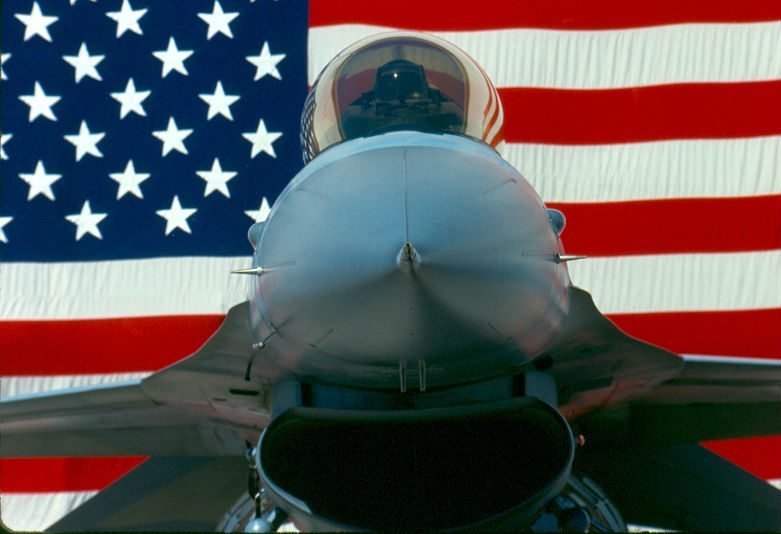General Dynamics F-16A “Fighting Falcon”
S/N 79-0388
Crew: One
Engine: One Pratt & Whitney F-100-PW-200 turbofan; 23,830 lbs thrust in afterburner
Wingspan: 32 ft 9 1/2 in
Length: 49 ft 3 1/2 in
Height: 16 ft 8 1/2 in
Weight: empty: 16,285 lbs; combat: 25,281 lbs; max: 37,500 lbs
Speed: max: 1,345 mph (Mach 2.05); cruise: 577 mph
Range: combat: 340 miles; transit: 2,415 miles
Service Ceiling: 55,000 ft
Armament: One 20mm M61A1 rotary cannon; AIM-9 air-to-air missiles on wingtips; various ordnance
Cost: $8,200,000 (approximate)
The F-16A, proudly displayed in the Hill Air Force Base Museum, was manufactured by the Fort Worth Division of General Dynamics in Fort Worth, Texas. It was delivered to the Untied States Air Force on November 3, 1980. After delivery, it was assigned to the 57th Fighter Weapons Wing of the Tactical Air Command at Nellis Air Force Base in Nevada. The aircraft was then deployed to Edwards Air Force Base in California.
This F-16 made its home Hill Air Force base in 1981 when it was transferred to the 388th Tactical Fighter Wing in August of 1981. From there it went back to Nellis Air Force Base to serve the 474th Tactical Fighter Wing in December 1983. It served with the 174th Tactical Fighter Wing in New York Air National Guard for the final duty of the aircraft beginning in May 1989. In 1994 the F-16 arrived back in Utah to be put on static display at the Hill Aerospace Museum where it was painted to resemble the 388th Fighter Wing based out of Hill Air Force Base.
The F-16 was introduced in August of 1978, and is still being used by the United States Air Force today. As of July 2016, there have been 4,573 F-16s build by General Dynamics and Lockheed Martin to serve the United States. The F-16 can fly at Mach 2.05, meaning that it can fly 2.05 times faster than the speed of sound, and the highest elevation, or ceiling, this aircraft can fly is 55,000 feet.

